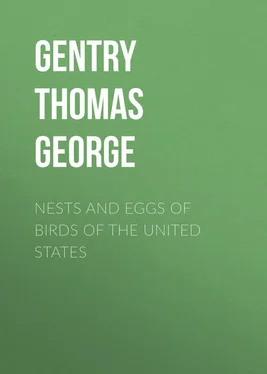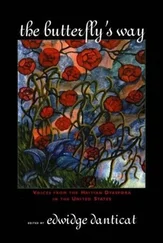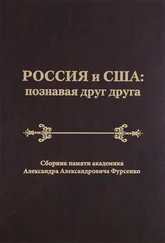Thomas Gentry - Nests and Eggs of Birds of The United States
Здесь есть возможность читать онлайн «Thomas Gentry - Nests and Eggs of Birds of The United States» — ознакомительный отрывок электронной книги совершенно бесплатно, а после прочтения отрывка купить полную версию. В некоторых случаях можно слушать аудио, скачать через торрент в формате fb2 и присутствует краткое содержание. Жанр: foreign_antique, foreign_prose, на английском языке. Описание произведения, (предисловие) а так же отзывы посетителей доступны на портале библиотеки ЛибКат.
- Название:Nests and Eggs of Birds of The United States
- Автор:
- Жанр:
- Год:неизвестен
- ISBN:нет данных
- Рейтинг книги:5 / 5. Голосов: 1
-
Избранное:Добавить в избранное
- Отзывы:
-
Ваша оценка:
- 100
- 1
- 2
- 3
- 4
- 5
Nests and Eggs of Birds of The United States: краткое содержание, описание и аннотация
Предлагаем к чтению аннотацию, описание, краткое содержание или предисловие (зависит от того, что написал сам автор книги «Nests and Eggs of Birds of The United States»). Если вы не нашли необходимую информацию о книге — напишите в комментариях, мы постараемся отыскать её.
Nests and Eggs of Birds of The United States — читать онлайн ознакомительный отрывок
Ниже представлен текст книги, разбитый по страницам. Система сохранения места последней прочитанной страницы, позволяет с удобством читать онлайн бесплатно книгу «Nests and Eggs of Birds of The United States», без необходимости каждый раз заново искать на чём Вы остановились. Поставьте закладку, и сможете в любой момент перейти на страницу, на которой закончили чтение.
Интервал:
Закладка:
In the collection of the Smithsonian Institution there is to be seen a nest which was obtained by Mr. Kennicott at the Cumberland House, on the Saskatchewan River. It is pensile, like all others, but is almost exclusively built of pine-needles – a dry and hard material, difficult of management in the construction of such a domicile. With these are intermingled flax-like vegetable fibres, fine strips of bark, and fragments of moss. Within is placed an inner nest composed of strips of bark, pine leaves and fine, dry grasses. The external fabric is rather loosely put together – an unusual feature – but the inner portion, in the compactness and strength with which it was made, is in striking contrast.
After the nest is finished, the female, on the ensuing day, and occasionally not until the expiration of the third or fourth, commences to lay her eggs, at the rate of one daily, until the entire complement of three or four has been laid. Incubation follows closely, usually on the day succeeding the last deposit, and continues for nearly eleven days. This is not the exclusive task of the female, as the male sometimes assists her. When the latter is not thus occupied, it is seldom that he may be found in the vicinity, being absent either designedly, or in search of food. Should the nest be approached at this time, the female sits close, and seems to manifest neither timidity nor alarm. We have often surprised her on the nest, and reached out our hand to take her, when she would watch our actions very narrowly, as if seeking to study our motives, but remaining perfectly motionless all the while. A nearer approach was invariably followed by her sudden departure therefrom. The bird would not wholly desert the nest, but demurely station herself upon an adjoining twig, in order to watch our actions. But with the male it is quite different.
Any attempt at disturbance or pillage is resented with spirit and courage, especially when the nest contains young birds.
The home of this Vireo is often chosen by the Cowbird as a place of deposit for her eggs. So singularly devoted to their alien guests do these foster-parents become, that they nurture them very tenderly, even to the neglect of their own offspring. A case is mentioned where three of these parasitic eggs had been deposited in the nest of the Vireo before any of her own. Without laying any, the female Vireo proceeded to set upon and hatch the intruders. Another case is cited where two Cowbird's eggs were laid alongside of two of the Vireo's. The latter immediately stopped laying and proceeded to incubate. In each of these cases it is evident that the female Vireo forewent her own maternal instincts, and at once conformed to the new situation.
The young are objects of special parental interest. From the time they are hatched, until the period of their leaving the nest to earn a livelihood, they are watched over, and fed with the daintiest fare which Nature affords. Caterpillars, diptera, plant-lice, small spiders and berries, constitute their earliest diet; but as they increase in size and strength, other articles of a coarser nature are added. At the age of twelve days they vacate the nest, but continue under the watchful eyes of their parents a week longer, when they are able to forage for themselves.
The anxieties of brood-raising being over, both young and old, the former in imitation of their parents, seek the tall tree-tops and glean in company. Later, they come down from these lofty retreats to delve among the grasses. Finally, as if disdaining too near an approach to earth, they quickly forsake such groveling pursuits, and seek the viburnum and dogwood bushes, where they find many a rich repast. Here they remain until the last of September, or the beginning of October, when cold weather and scarcity of food compel them to hunt warmer climes.
The eggs of this Vireo vary considerably in size, according to locality; the further south the smaller they are found. Specimens from Northern Alabama have an average measurement of .77 of an inch by .52; from Nova Scotia,94 by .65; from Pennsylvania and Massachusetts, intermediate localities,82 by .56, and .83 by 62. The ground-color of all is a clear crystal-white, and they are marked with spots and fine dots of red-brown, which are chiefly found at the larger extremity. But a single brood is raised, although nests with eggs have been taken early in July, which must be attributed to birds whom accident or design had prevented from obeying their natural instincts earlier.
Plate XI. – TRINGOIDES MACULARIUS, Gray. – Spotted Sandpiper
The Spotted Sandpiper has an extended and varied distribution throughout North America. Unlike most of its allies, it breeds with equal readiness wherever found, and is one of the best known and most abundant of all its tribe.
From its winter-quarters in the Southern States, and also in the West Indies and Central and South America, to Brazil, it takes up the line of migration about the tenth of April, and gradually spreads itself over nearly the whole country as far north as Labrador and Fort Yukon.
According to Mr. Trippe, it is the only species of its family that resorts to the mountains of Colorado. Here, it arrives early in May, and departs in September. All the larger streams, to an altitude of 8,000 or 9,000 feet, are visited, and, even, in some instances, the shores of the lakes near the timber line.
On their first arrival, the banks of large rivers are frequented; but as the season advances, many trace their way into the interior, along the courses of our creeks and rivulets. Their sole object now is the acquirement of food. For this purpose, a life of solitude is preferable to any other. Although three or four individuals may frequently be discovered together upon the same feeding-grounds, yet careful and repeated observations have convinced us that this occurrence is merely accidental, and not dictated by a desire for company. At such times, the birds become so deeply absorbed in the business before them, that the approach of human beings is unobserved, and the actors are only aroused from the stolidity and indifference into which they have fallen, by the crackling of a dead branch, or the dislodgment of a pebble from its mooring. Conscious of impending danger, but never stopping to inquire into the cause of the alarm, they seek safety in instant flight, and repair to other scenes, at no great distance from the former, whore they think to pursue their gastronomic occupation without fear of being molested.
Such are the colors of this species, that the utmost harmony obtains between them and the hues of surrounding objects. The keen eye of the practised sportsman is often eluded thereby. Were it not for its peculiar habit of wagging the tail, it would be a very difficult bird to locate, especially when in a standing attitude; for whether thus occupied, or running on the ground, or along the rails of a fence, or in the water, this motion seems continual. Even the young, as soon as they are released from the shell, are taught by instinct the same remarkable movement.
Usually about the third week from the time of their first appearance, but sometimes later, the sexes, grown corpulent from good feeding, discard in a measure the "joys of the table," and seek each other's society. From stilly bank of inland pond or stream, or where old Neptune lashes in frenzied mood his solid flanks, their strange and simple call, peet-iveet, peet-weet , may be heard in quick succession, louder, and more distinct, than was their wont. Nor do the males alone indulge therein; for the gentler sex oft join their lords in wanton rivalry.
Less whimsical than their aristocratic neighbors who affect the tall tree-tops and shady bushes, the lady Sandpipers are more easily wooed and won. Their ardent lovers have but to make their suits with due obsequiousness, to receive the courted promises. A few more avowals of love, and caresses, and the necessary reciprocations on the part of the females, and the happy lovers having sealed their plighted pledges in a bond of union, the respective parties journey off in search of suitable places for establishing their homes. This event generally occurs about the last of May, in some localities, but sometimes not earlier than the second week of June, in others, and, perhaps, later in the extreme northern limits of its habitat.
Читать дальшеИнтервал:
Закладка:
Похожие книги на «Nests and Eggs of Birds of The United States»
Представляем Вашему вниманию похожие книги на «Nests and Eggs of Birds of The United States» списком для выбора. Мы отобрали схожую по названию и смыслу литературу в надежде предоставить читателям больше вариантов отыскать новые, интересные, ещё непрочитанные произведения.
Обсуждение, отзывы о книге «Nests and Eggs of Birds of The United States» и просто собственные мнения читателей. Оставьте ваши комментарии, напишите, что Вы думаете о произведении, его смысле или главных героях. Укажите что конкретно понравилось, а что нет, и почему Вы так считаете.












